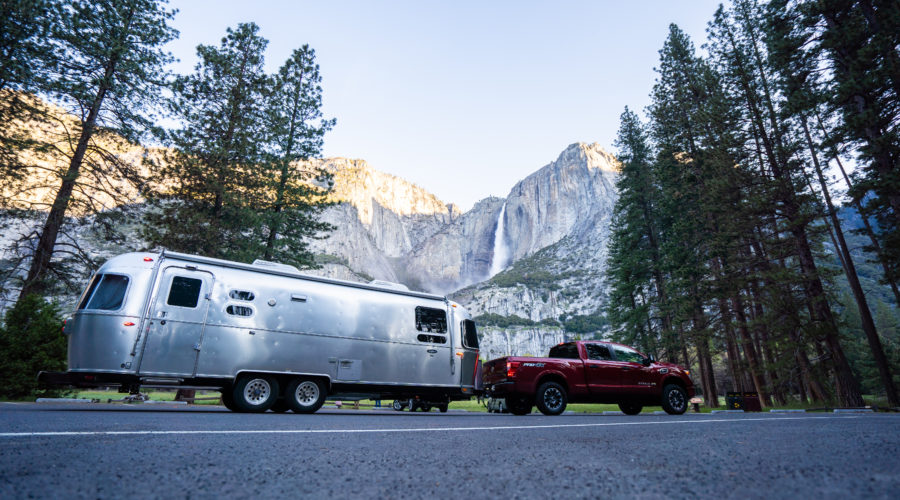
Road-Tripping with a Big Ol’ Trailer Is Easier Than You Think
Follow these trailer basics to live out your summer road trip dreams.

We’ve all seen photos on Instagram in which a tear-dropped trailer overlooks a grassy coastline or a shiny Airstream sits peacefully at the bottom of a tree-dotted hillside. Those images evoke a serious case of road trip envy, and the truth is, camping trailers enhance even the simplest road trip adventures. You can park at campsites near lakes and mountains, sleep comfortably in windy weather or on rocky terrain, and in the process, convert friends and family to that oh-so-photogenic glamping lifestyle.
So you’ve decided trailering is something you want to pursue, but it’s dawning on you that driving around with an extra vehicle attached to the back of your car is a bit intimidating. It’s not as difficult as you’d think! Below, we distill the most worrying parts of the process.
Get Equipped
You don’t have to own a truck: whatever car you own right now might be able to pull a trailer. Of course, you’ll need to check the manufacturer’s specifications for the towing capacity and install the proper class of hitch. Make sure the trailer ball of your hitch matches perfectly with the trailer coupler. We’ve heard of cars as small as Mini Coopers pulling the ultra-light Happier Camper HC1. If you plan to do a lot of regular trailering, consider investing in a car with trailer-specific features like a trailer light check button on the key fob and integrated trailer brake and sway control as found in the Nissan Titan PRO-4X full-size pickup. A truck like that can pull a good-sized Airstream with ease. Whichever trailer you’re interested in renting or buying, head to a local dealership for more information and a test drive.


